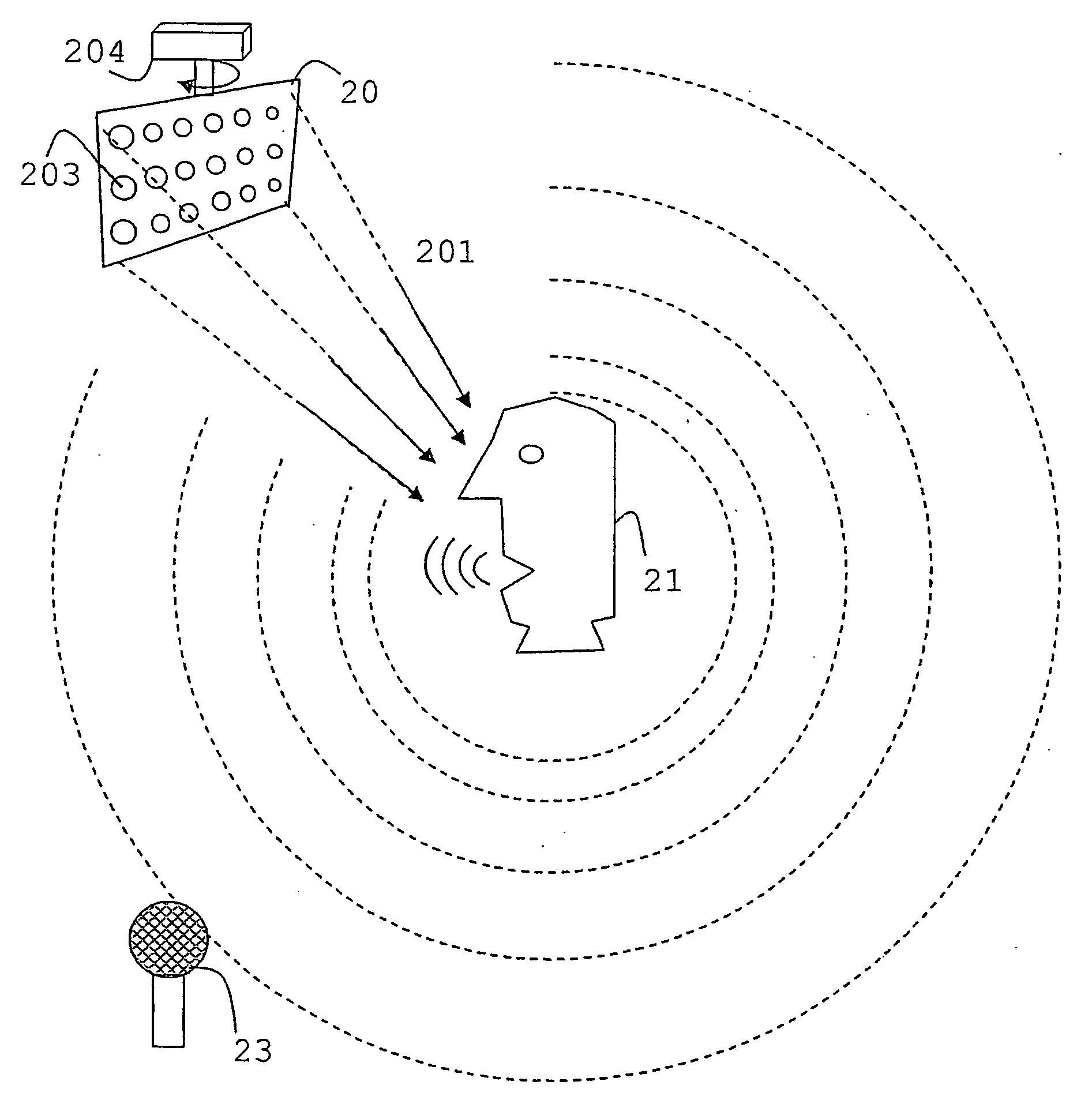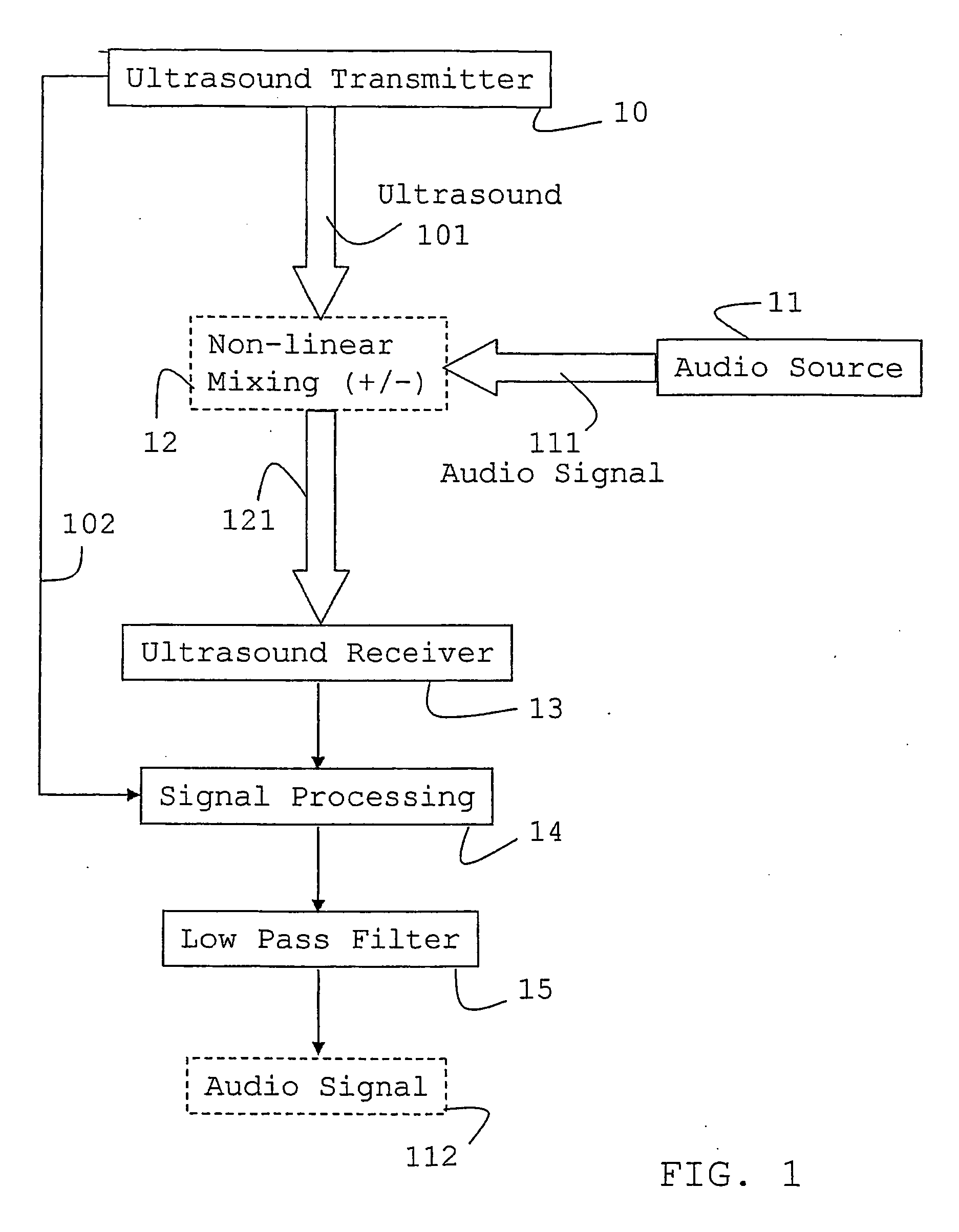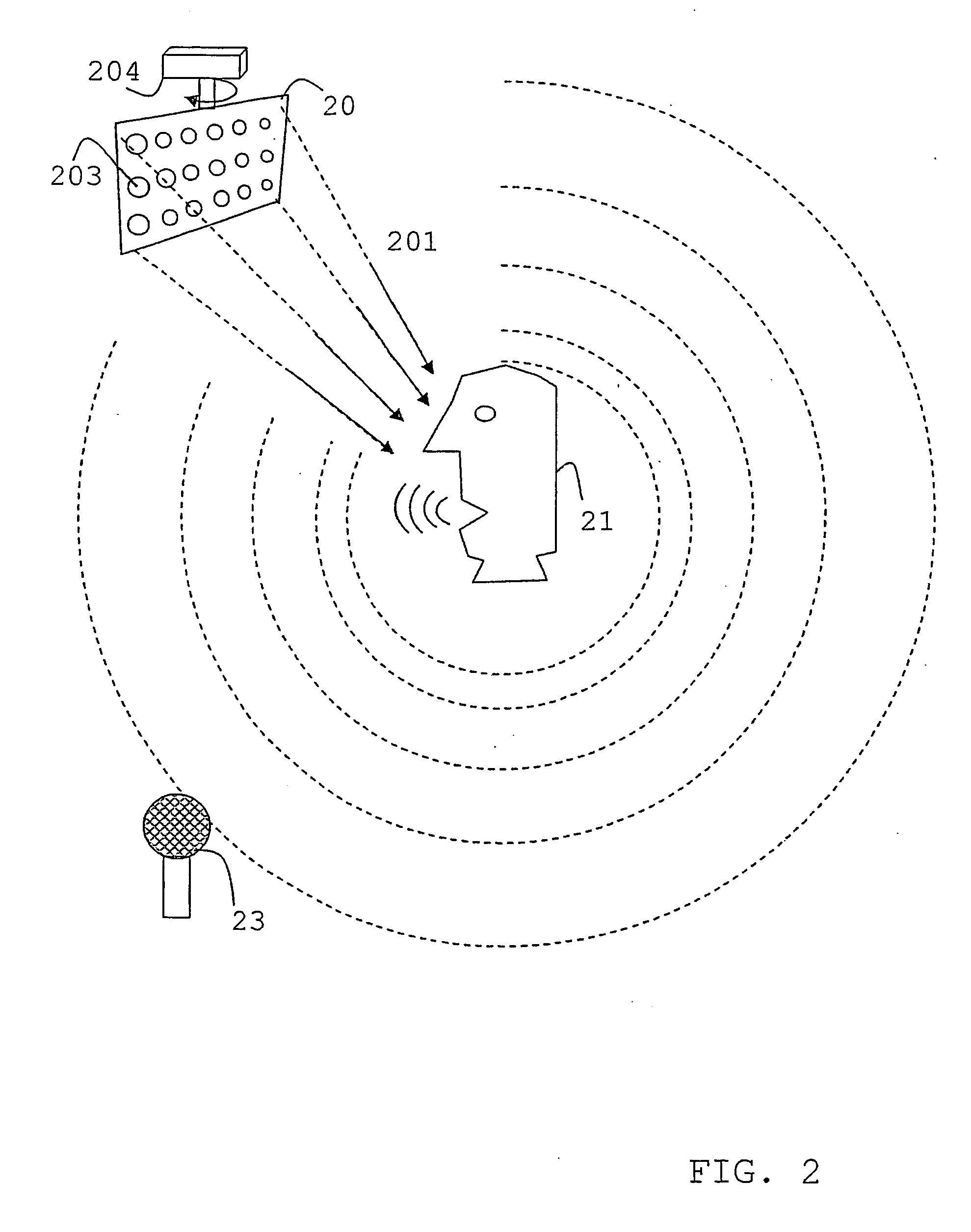Directional Microphone
- Summary
- Abstract
- Description
- Claims
- Application Information
AI Technical Summary
Benefits of technology
Problems solved by technology
Method used
Image
Examples
Embodiment Construction
[0030]FIG. 1 is a flow diagram illustrating the operation of the directional microphone. The ultrasound transmitter 10 emits a beam of ultrasound, depicted by the double stemmed arrow 101, in the direction of the audio source 11 which may for example be a person speaking. The audible sound waves 111 emanating from the speaker's mouth interact nonlinearly in the air with the ultrasonic waves generating a source of further ultrasonic waves 121 with frequency modified by the audible signal. These generated [sum and difference] ultrasound waves radiate from the mixing point 12 and are picked up by an ultrasound receiver 13. The received signals are processed with reference to a signal 102 from the transmitter 10 using a signal processor 14 and filtered through a low-pass filter 15 to produce an audio signal 112, which is a representation of the original audio signal 111.
[0031]FIG. 2 is a schematic representation of a directional microphone system operating at some distance from the audi...
PUM
 Login to View More
Login to View More Abstract
Description
Claims
Application Information
 Login to View More
Login to View More - R&D
- Intellectual Property
- Life Sciences
- Materials
- Tech Scout
- Unparalleled Data Quality
- Higher Quality Content
- 60% Fewer Hallucinations
Browse by: Latest US Patents, China's latest patents, Technical Efficacy Thesaurus, Application Domain, Technology Topic, Popular Technical Reports.
© 2025 PatSnap. All rights reserved.Legal|Privacy policy|Modern Slavery Act Transparency Statement|Sitemap|About US| Contact US: help@patsnap.com



